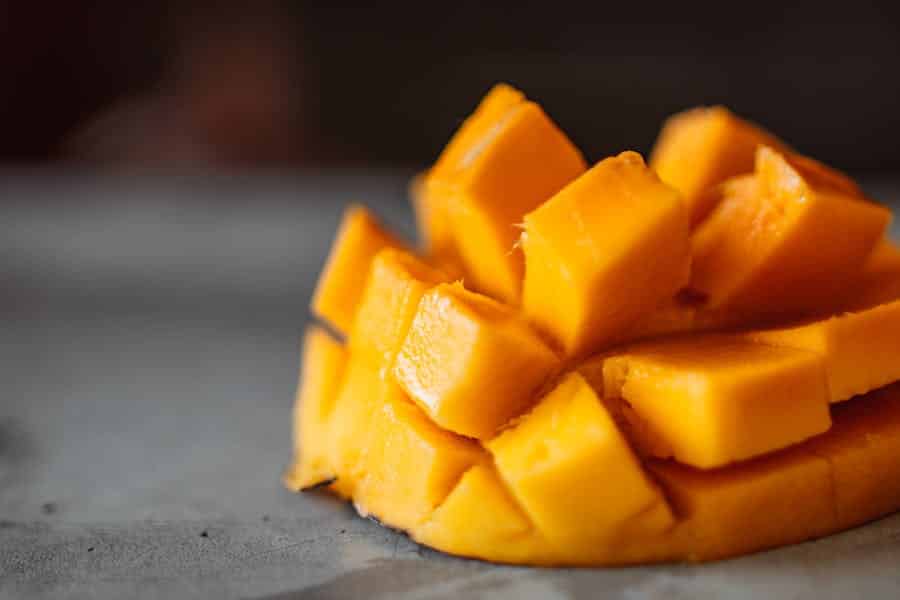
The mango season in the USA typically spans from April to September, with peak availability during the summer months. However, the exact timing can vary depending on the region and the variety of cultivated mangoes. In southern states like Florida and California, mangoes are often harvested earlier in the season, starting as early as March and extending into August. In other parts of the country, particularly in the Midwest and Northeast, mangoes may not be locally grown and are typically imported during summer. It’s always best to check with local farmers’ markets or grocery stores for the freshest mangoes in season.
The Popularity Of Mangoes In The USA
The popularity of mangoes in the USA has soared in recent years, driven by a combination of factors that highlight their delicious flavor and cultural significance. Here’s a detailed breakdown:
As the world becomes more interconnected, culinary trends and tastes from diverse cultures have entered the American diet. Mangoes, with their rich and complex flavor profile, have captured the attention of food enthusiasts and chefs, becoming a staple in fusion cuisine and gourmet dishes.
Mangoes are delicious and nutritious, packed with essential vitamins, minerals, and antioxidants. Their high vitamin C content has made them a popular choice for health-conscious consumers looking to boost their immune system and promote overall well-being.
Mangoes lend themselves to various culinary applications, from smoothies and salads to curries and desserts. Their sweet and tangy flavor adds depth to both savory and sweet dishes, making them a versatile ingredient that chefs love experimenting with.
While the peak mango season in the USA typically falls between April and September, advancements in transportation and agricultural practices have made mangoes available year-round. This extended availability allows consumers to enjoy mangoes in various forms, including fresh, frozen, dried, and canned, regardless of the season.
Mangoes hold a special place in the hearts of many cultures worldwide, symbolizing abundance, prosperity, and hospitality. In the USA, where diversity is celebrated, mangoes serve as a bridge between different communities, connecting people through shared culinary experiences and traditions.
Food retailers and producers have capitalized on mangoes’ growing popularity by launching marketing campaigns and promotions that highlight their appeal. From social media influencers sharing mouthwatering mango recipes to supermarkets offering special discounts during peak season, mangoes are a must-have item in the American pantry.
The Mango Season Timeline In The USA
The mango season in the USA follows a distinct timeline marked by various stages of cultivation, harvest, and availability. Understanding this timeline is essential for consumers seeking the freshest mangoes and growers to optimize their production strategies.
The timeline typically unfolds as follows:
Spring Preparation: As winter fades, mango growers in regions like Florida and California begin preparing their orchards for the upcoming season. This involves pruning trees, fertilizing soil, and implementing pest control measures to ensure healthy mango trees are ready for flowering.
Flowering and Fruit Set: In late winter or early spring, mango trees burst into bloom, with fragrant flowers adorning their branches. Bees and other pollinators play a crucial role in fertilization, leading to the development of small mango fruits. This stage is critical for determining the potential yield of the upcoming harvest.
Early Season Harvest: By late spring, the first signs of ripening mangoes appear in warmer regions like South Florida. Early-season varieties, such as ‘Tommy Atkins’ and ‘Haden,’ are among the first to be harvested, offering consumers a taste of the season’s bounty.
Peak Season Bounty: Mango production peaks across the USA as summer approaches. From June to August, mango orchards are teeming with activity as growers work tirelessly to harvest ripe fruits before they become overripe. During this time, various mango cultivars, including ‘Kent,’ ‘Keitt,’ and ‘Ataulfo,’ flooded the market, offering consumers ample choices.
Late Season Harvest: As summer wanes and fall beckons, mango season gradually winds down in many regions. Late-season varieties, such as ‘Keitt’ and ‘Kent,’ may continue to be available into September and even October, depending on local growing conditions. However, the supply becomes more limited as cooler temperatures set in.
Transition to Imported Mangoes: With the arrival of fall and winter, domestically grown mangoes have become scarce in most parts of the USA. Retailers rely on imported mangoes from countries like Mexico, Peru, and Ecuador to meet consumer demand during the off-season. While these mangoes may lack the freshness of locally grown produce, they offer a welcome taste of tropical sweetness during the colder months.
Varieties of mangoes are commonly found in the USA
Various mango cultivars find their way into markets and grocery stores, each with its unique flavor, texture, and appearance. Here are some of the most commonly found mango varieties in the USA:
Tommy Atkins:
Perhaps the most widely available mango variety in the USA, the Tommy Atkins mango is known for its vibrant red and green skin and sweet, mildly fibrous flesh. It is popular for fresh consumption and processing into products like juices and smoothies.
Haden:
Considered one of the “parent” mango varieties in the USA, the Haden mango boasts a rich, sweet flavor and smooth, fiber-free texture. Its medium to large size and distinctive yellow and red skin make it easily recognizable in markets during the peak of the mango season.
Kent:
With its smooth, non-fibrous flesh and sweet, tropical flavor, mango has earned a devoted following among enthusiasts. It features greenish-yellow skin blushed with red and is prized for its consistent quality and excellent eating experience.
Ataulfo (or Honey Mango):
Characterized by its small size, vibrant yellow skin, and creamy, buttery texture, the Ataulfo mango is a favorite among connoisseurs. Its exceptionally sweet flavor with hints of honey and tropical notes makes it ideal for eating fresh or incorporating into desserts and salads.
Keitt:
Known for its late-season availability, the Keitt mango offers a refreshing option well into the fall months. It features a green skin that remains green even when ripe and boasts a sweet, tangy flavor with minimal fiber, making it a popular choice for slicing and eating out of hand.
Francis:
Originating from the Caribbean, the Francis mango is prized for its intense, aromatic flavor and smooth, fiber-free flesh. Its golden yellow skin and elongated shape make it visually distinct, while its rich, sweet taste with hints of spice and citrus delights the palate.
Where To Find Fresh Mangoes During The Season?
During mango season in the USA, there are several places where you can find fresh mangoes, ensuring you can enjoy this delectable fruit at its peak of ripeness:
- Farmers’ Markets: Local farmers’ markets are excellent places to find fresh, seasonal produce, including mangoes. Farmers often bring their freshly harvested mangoes directly to market, allowing you to purchase them at their peak of freshness.
- Grocery Stores: During mango season, most grocery stores carry a variety of fresh fruits, including mangoes. Look for displays near the produce section or ask the store staff for assistance in locating the freshest mangoes.
- Asian or International Markets: Asian or international markets often have a wide selection of mango varieties, including those imported from different countries. These markets may carry specialty mangoes you won’t find in mainstream grocery stores, offering a unique tasting experience.
- Pick-Your-Own Orchards: Some orchards allow visitors to pick their fruit during the harvest season in regions where mangoes are grown. This hands-on experience ensures you get the freshest mangoes and allows you to connect with the farming process firsthand.
- Online Retailers: With the rise of online grocery shopping, fresh mangoes are now available for delivery from various online retailers. Look for reputable vendors that specialize in sourcing high-quality produce and offer expedited shipping to ensure freshness upon arrival.
- Community Supported Agriculture (CSA) Programs: Joining a CSA program allows you to receive a weekly or monthly box of locally grown produce, often including mangoes, when in season. By supporting local farmers through CSA subscriptions, you can enjoy fresh, seasonal fruits while contributing to small-scale agriculture’s sustainability.
Bottom Line
During mango season in the USA, fresh mangoes are readily available at farmers’ markets, grocery stores, Asian or international markets, pick-your-own orchards, online retailers, and through Community Supported Agriculture (CSA) programs. By exploring these options, consumers can enjoy the delicious sweetness and tropical flavor of mangoes at their peak of ripeness.
FAQ’s
Where do mangoes grow in the USA?
Mangoes are primarily grown in the southern regions of the USA, including Florida, California, and Hawaii. Florida is the largest mango-producing state in the country, followed by California.
What are the best types of mangoes to buy in the USA?
Some of the best types of mangoes commonly available in the USA include Tommy Atkins, Haden, Kent, Ataulfo (or Honey Mango), Keitt, and Francis. Each variety has its unique flavor, texture, and appearance.
Are mangoes available year-round in the USA?
While mangoes are typically in season from April to September in the USA, advancements in transportation and agricultural practices have made mangoes available year-round. During the offseason, mangoes are often imported from countries like Mexico, Peru, and Ecuador.








